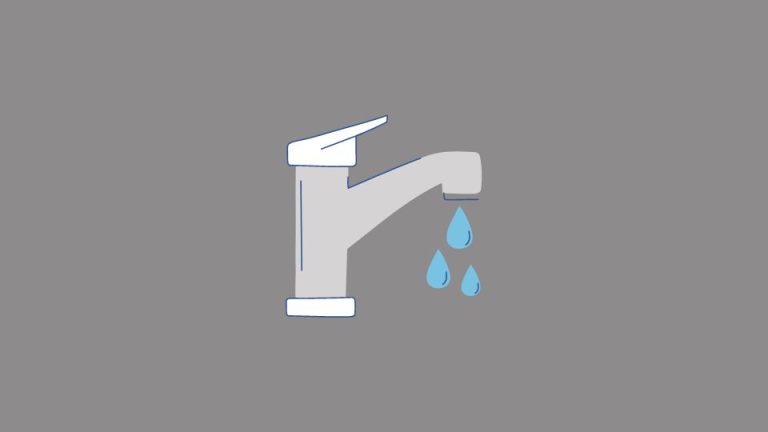Are Landlords Responsible for Pest Control in California?
Ever walked into your kitchen to find a roach scurrying across the counter? Or woken up to find silverfish in your closet? You’re not alone. It’s a harrowing experience that no tenant in California – or anywhere else for that matter – should have to endure. But when it comes to pointing fingers and picking up bills for pest control, who ultimately holds the responsibility? In the Golden State of California, landlords bear the legal obligation to provide pest-free rental properties. Consequently, they’re typically responsible for pest control unless the infestation is caused by the tenant’s improper behavior.
Understanding the Legal Responsibilities of Landlords in California
As a landlord in California, it’s crucial to understand that you have certain legal responsibilities when it comes to pest control. These responsibilities stem from both state laws and local ordinances, not to forget the dictates of public health agencies. So, it’s not an issue to overlook. However, don’t worry – we’re here to provide you with an outline of these responsibilities and legal obligations.
Basically, landlords in California are required by law to offer and maintain habitable rental properties, as defined by the California Civil Code. This means that the premises should be free from pests before a tenant moves in. In addition, if a rental property becomes infested with pests during a tenant’s occupancy due to no fault of the tenant, the landlord is typically responsible for handling the infestation.
Moreover, landlords may be required to cover the cost of professional pest control services, unless the lease agreement specifically states otherwise or if the infestation was caused by the tenant’s behavior or negligence. There may be additional responsibilities depending on the severity, type of pests involved, and local public health codes.
To clarify, substandard conditions under the California Civil Code include an infestation of insects, vermin, or rodents and accumulating rubbish that has attracted these pests. Therefore, ignoring these infestations not only endangers your tenants and their property, but your investment as well, and may put you in a position of serious legal liability.
“A dwelling shall be deemed untenantable if it substantially lacks any of the following affirmatively specified characteristics, including but not limited to effective waterproofing and weather protection… , plumbing or gas facilities…, hot and cold running water…, a heating system…, electrical lighting…, clean and sanitary buildings, grounds, and appurtenances…, and an adequate number of appropriate receptacles for garbage and rubbish…”.– California Civil Code §1941.1
Being conversant with these legal requirements allows you to protect the health of your tenants and preserve the quality and value of your investment. It also helps you avoid potential legal troubles and disturbances to your operations.
Key Takeaways:
- Landlords are required by law to provide a pest-free living condition to tenants.
- If a rental property becomes infested and it’s not the fault of the tenant, landlords are generally responsible for pest control.
- Landlords could be required to cover the cost for professional pest control services.
- Ignorance of the infestation issues might lead to legal liabilities for violating the California Civil Code and potential local health codes.
So, as a landlord in California, it’s not just responsible but also smart to stay ahead of the game when it comes to pest control!
The Importance of Pest Control in Rental Properties
When we talk about the comfort and safety of a property, pest control holds a highly significant place. It is not just about maintaining a clean and pest-free environment but also about ensuring the well-being of tenants. Unaddressed pest issues can lead to serious health problems, such as allergies, asthma, or even diseases transmitted by rodents or insects.
Pests like rodents, termites, bed bugs, and cockroaches can also inflict considerable damage to the property. They can destroy electrical wires, timber, furnishings, and other valuable assets, leading to a decline in the property’s overall value. Therefore, maintaining optimal pest control in rental properties is both beneficial and necessary.
Consider this—an investment in pest control can save you from bigger costs down the line. Not only are you protecting your property and its value, but you are also ensuring that your tenant stays safe and healthy. Plus, reliable pest control can help maintain your reputation as a responsible landlord, necessary for a successful rental business.
Moving on, let’s address some specific reasons why pest control is indispensable in rental properties:
- Health concerns: Many pests, like cockroaches and rats, carry diseases that can be transmitted to humans. Furthermore, bedbug bites can cause serious allergic reactions and discomfort.
- Property deterioration: Pests, especially termites and rodents, can eat away at the building’s infrastructure, leading to considerable damage over time. Your property’s overall lifespan may be substantially reduced due to pest infestation.
- Tenant satisfaction: Pests can severely affect quality of life. A pest-free environment is one of the most basic amenities a tenant expects, and providing this ensures their satisfaction and longevity in the property.
- Legal implications: As we discussed earlier, in certain circumstances, landlords have legal responsibilities to manage pest control. Neglecting this can result in penalties or legal action.
In the end, effective pest control results in a win-win situation for both landlords and tenants. The former maintains the property value, avoids potential legal hassles, and keeps tenants satisfied. The latter enjoys a safe and comfortable living environment. Clearly, the importance of pest control in rental properties in California, and everywhere else, cannot be overstated.
The California Health and Safety Code and Pest Infestations
When it comes to pest infestations, the California Health and Safety Code is quite clear on the matter. Section 17920.3 of this code states many conditions that a building or property could have which would deem it substandard. Among them, the presence of pests is clearly stated.
This section provides a legal definition of what constitutes a substandard building, including infestations of insects, vermin, or rodents, and lack of adequate sanitation to prevent such infestations. In addition, the law specifies that substandard conditions can lead to a building being deemed uninhabitable.
What does this mean for you, as a landlord? Essentially, if your property is home to a pest infestation that you ignore, you could potentially find yourself on the wrong end of a legal battle. But more than that, it’s your duty to ensure that your tenants have a safe and comfortable place to live, free of pests.
“In order for the property to be considered habitable, it must be free from pests,” is a phrase deeply rooted in California law. Landlords are legally obliged to actively maintain their rental properties to keep them free from pests and to take action if an infestation should occur. This obligation falls under what is known as the landlord’s warranty of habitability.
The Warranty of Habitability: What does it mean? This is a crucial aspect of landlord-tenant law which applies not only in California but nationwide. Basically, it’s a guarantee from the landlord to the tenant that the rental unit will be fit for humans to live in – habitable.
Just think about it… Pests like rodents, roaches or bed bugs, while they may seem like a small nuisance, can have severe implications on the health and well-being of your tenants. It’s not just about bites or allergies; pests can spread diseases, cause damage to personal property, and they can significantly influence the quality of life for your renters.
For tenant-landlord relationships to be successful, both parties must take their responsibilities seriously. Failure to do so can lead to trust issues, legal disputes or worse, an unfit living environment.
After all, rental success is a two-way street: tenants have the right to a pest-free living environment, and in return, landlords have the right to maintain their properties in a state that attracts and retains responsible tenants. And remember, as a landlord, you’re not just providing a home; you’re running a business. Part of that responsibility is ensuring your properties are safe, clean, and welcoming.
Cases Where Landlords Are Legally Bound to Handle Pest Control
In California, landlords are generally required to ensure that their rental properties remain pest-free. Several conditions dictate such a necessity. Let’s delve into some typical scenarios where landlords must handle pest control matters:
- Onset of Pests Prior to Lease Commencement: If infestation signs date back to before the tenant’s occupancy, the landlord is legally bound to resolve the issue. The landlord’s duty to maintain habitable premises, according to California Civil Code Section 1941, necessitates these actions.
- Structural Defects Leading to Infestation: Should pests invade due to property defects—for instance, cracks or gaps in the building—the landlord is obligated to fund and perform necessary extermination efforts and repairs.
- Rental Agreement Stipulations: Some leases or rental agreements include clauses detailing the landlord’s pest control responsibilities. In such cases, landlords must uphold the agreement’s term, providing regular pest control services regardless of the infestation’s cause.
- Turn of Events Leading to Infestation: Suppose a flood, storm, or other extraordinary event introduces a pest infestation. In that case, it’s often the landlord’s responsibility to manage pest control, as this falls under maintaining a habitable living environment.
However, exceptions exist. If the tenant’s actions or negligence lead to an infestation—like failing to dispose of garbage promptly, causing a rodent problem—the tenant may bear the cost and responsibility for pest control services.
To avoid disagreements, it’s crucial that landlords and tenants clarify pest control responsibilities beforehand and include them in their lease terms.
Each case involving pest infestations is unique and depends upon the situation’s specifics. Consequently, landlords should apply California’s general rules and consult legal assistance when in doubt.
Common Types of Pests Found in California Rental Properties
diverse range of ecosystems and climates. In the sunny state, there are a few common pests that are frequently spotted in rental apartments and houses. Let’s take a look at the most common ones:
- Cockroaches: These unpleasant creatures can quickly infest a home if left unchecked. They’re attracted to food particles and dirty conditions, so proper cleanliness can help prevent these invaders.
- Rats and Mice: These rodents are highly adaptable and can thrive in many environments. They often sneak into homes in search of food and shelter. The presence of droppings, gnaw marks, or scampering noises can suggest an infestation.
- Bed Bugs: Bed bugs are stealthy pests that thrive in mattresses, furniture, carpets, and other hiding places. They feed on human blood and can cause itchy, red bites which are often a telltale sign of their presence.
- Ants: Coming in various species, ants can prove to be a nuisance when they invade a home. Some, like carpenter ants, can even cause structural damage to buildings.
- Termites: Often called the silent destroyers, termites can cause extensive damage to wooden structures over time without any visible signs until it’s too late.
- Fleas and Ticks: These small insects are not only a nuisance but can also transmit diseases. Fleas are typically brought into the house by pets, while ticks thrive in grassy and wooded areas.
While some of these pests may seem harmless, they can all pose health risks or cause damage to property if infestations aren’t addressed promptly and properly. Awareness of these common pests can prepare you in recognizing and taking steps towards their elimination.
Signs of Pest Infestations and How to Identify Them
Paying attention to signs of pest infestations in your rental property can help you overcome any pest-related issues quickly and efficiently. For sure, the sooner you identify a pest problem, the easier it will be to get it under control and prevent further damage. But how do you identify these miscreants? Let’s break it down.
Physical Evidence: Often, the most common sign of pest infestation is physical traces. You could notice droppings or shed skin from bugs, or find holes or marks where pests have been gnawing or scratching. Visible damage to fabrics, furniture or woodwork is often a telltale sign of infestation. Some pests, like cockroaches or rats, might even be sighted running around, particularly during the night.
Odd Sounds: You might hear peculiar sounds at night; it could be the rodents scurrying around in your walls or attic. Termites are also known to produce a quiet clicking sound as they chew through your wooden structures. So, keep your ears pricked up—it could make a huge difference.
Unusual Odors: A strong, persistent and unusual smell could also be a signal of a pest presence. Mice are known to emit a musty odor, while roaches often produce a slick, oily smell. So, don’t ignore your nose, it might be telling you something crucial.
Visible Life Stages: Finding different life stages of an insect, such as larvae or eggs, might suggest a growing infestation. For instance, you might note clusters of tiny, pearl-white eggs in hidden areas like cracks or crevices, signaling a potential roach problem.
Pest Tracks: Keep an eye out for pest tracks too. These can range from footprints or streaks to greasy rub marks left by rodents. Also, if you notice a trail of ants marching in a line, it’s not a good sign.
Quick and efficient mitigation of pest infestations heavily relies on your proactive, early detection and immediate action. However, remember that proper pest identification is important, as each pest type may require specific control measures. If unsure about the type of pest infestation or how to deal with it, calling in professional pest control services may be your safest bet.
The Importance of Proper Documentation in Pest Control Matters
issues is incredibly important for both tenants and landlords. Proper documentation tends to provide an objective record of the problem, the actions taken, and, importantly, any communication between the landlord and tenant. We’ll explore why this is crucial and how you can maintain your records effectively.
For landlords, the ability to prove you’ve met your legal responsibilities is majorly determined by your documentation. Say, for instance, you manage to control a rat infestation by calling in pest control services. If you don’t document these actions and the tenant lodges a legal complaint, how will you verify your efforts? That’s right, by documentation!
Here are some pointers on how to maintain proper documentation:
- Records of Complaints: As a landlord, keep track of all complaints related to pest control. This includes emails, letters, and even relevant text messages.
- Extermination Service Records: Remember to hold onto all records of extermination services used, including invoices and contracts. These can prove you’ve taken necessary steps to address the issue.
- Periodic Inspection Reports: Regular property inspections play a crucial role in managing pests, and copies of these reports serve as beneficial documentation.
- Pest Prevention Measures: Keep a record of all preventive measures taken, such as filling in gaps and holes, removing unwanted vegetation, or implementing good hygiene practices.
- Communication: Document communications with the tenant about the pest issue. If you’ve instructed them on certain precautions or remedies, keep a copy of these instructions.
For tenants, on the other hand, if you’ve reported a pest problem and your landlord has failed to act, good documentation of this can support your case if it escalates to a legal dispute. This documentation may include photographs of the infestation, copies of communication with the landlord concerning the issue, and any medical bills or other costs incurred due to the pests.
So keep in mind, record-keeping is key – it’s your best strategy for ensuring that everyone is held accountable when it comes to pest issues!
Tips for Preventing and Minimizing Pest Infestations in Rental Properties
If you’re a landlord, preventing pest infestations should be your top priority. While it’s true that you’re responsible for pest control in most situations, wouldn’t it be easier to prevent pests in the first place? Here are some tried-and-true tips to help you keep your rental properties pest-free and your tenants happy.
- Regular Inspections: One of the best ways to prevent pest infestations is by conducting regular property inspections. Look for signs of pests such as droppings, damages to property, or see any live pest themselves. Early detection can save you time, money, and a lot of stress down the line.
- Professional Pest Control Services: Hiring a professional pest control service can be a smart move. They can provide regular inspections and treatments to prevent pest infestations before they happen. They’ll also offer expert advice on what can be done to keep pests away.
- Proper Maintenance: Regular maintenance of the property can significantly reduce the chance of a pest infestation. This includes tasks like sealing cracks and holes, fixing leaking pipes, and ensuring that the property is kept clean and tidy.
- Tenant Education: Educating your tenants about the importance of cleanliness and the role they play in pest prevention can be immensely helpful.
Remember, prevention is always better than cure, especially when it comes to pest control in rental properties. So, don’t wait for a pest infestation to happen. Take proactive steps now to protect your rental properties and ensure a comfortable living situation for your tenants.
Tenant’s Responsibilities in Preventing Pest Infestations
While landlords have a major role in preventing pest infestations, tenants aren’t completely exempt either. Tenants must maintain cleanliness inside their rental units as poor sanitation is one of the leading causes of pest infestations.
- Proper Food Disposal: Ensure leftover food isn’t left out in the open and that there are no spills or crumbs left unchecked. It’s important that food wastes are disposed of properly and in a timely manner.
- Regular Cleaning: Regular sweeping, vacuuming, and cleaning can keep many pests at bay. For example, cockroaches are more likely to infest homes that are not kept clean.
- Report Pests: If tenants notice signs of pests, it’s crucial that they report it to the landlord immediately. The sooner the issue is addressed, the easier it will be to control.
By working together, landlords and tenants can significantly reduce the chances of pest infestations.
Conclusion
In conclusion, landlords in California do bear a significant responsibility when it comes to pest control in their rental properties. They are generally required by law to provide and maintain habitable premises, including addressing and preventing pest infestations. However, tenants also have their share of duties, particularly related to cleanliness and timely reporting of any signs of infestations. These obligations make it a joint responsibility, where both parties must cooperate to secure a pest-free living environment in their rental properties.
FAQs (Frequently Asked Questions)
1. Are landlords responsible for pest control in California?
Landlords are legally responsible for pest control in California. According to California Civil Code Section 1941.2, landlords are required to maintain their rental properties in a habitable condition, which includes addressing pest infestations.
2. What does the law in California say about the landlord’s responsibility for pest control?
The California Civil Code Section 1941.2 explicitly states that the rental unit must be free from pests such as rodents, cockroaches, and other vermin. Therefore, landlords are required to pay for pest control to eliminate pests and maintain a habitable living environment for tenants.
3. Can a landlord hire an exterminator to handle pest control?
Yes, a landlord can hire pest control experts or licensed pest control professionals to address pest infestations in their rental properties. This responsibility is usually outlined in the lease agreement or a pest control addendum.
4. What are the landlord’s obligations when it comes to pest control in California?
The landlord’s responsibility to eliminate pests is established under California law. Landlords are required to ensure that the rental unit is pest-free and that pest control solutions are effectively implemented when dealing with a pest infestation.
5. Can a tenant request pest control measures from the landlord?
Yes, tenants have the right to request pest control measures from their landlord if they encounter pest issues during their tenancy. It’s important for tenants to know their rights regarding pest control and to communicate any concerns to the landlord or property management.
6. Is the tenant responsible for pest control in California?
Landlords are responsible for dealing with a pest infestation and ensuring that the rental unit remains pest-free. Tenants are not typically responsible for pest control unless their actions directly contribute to the infestation.






